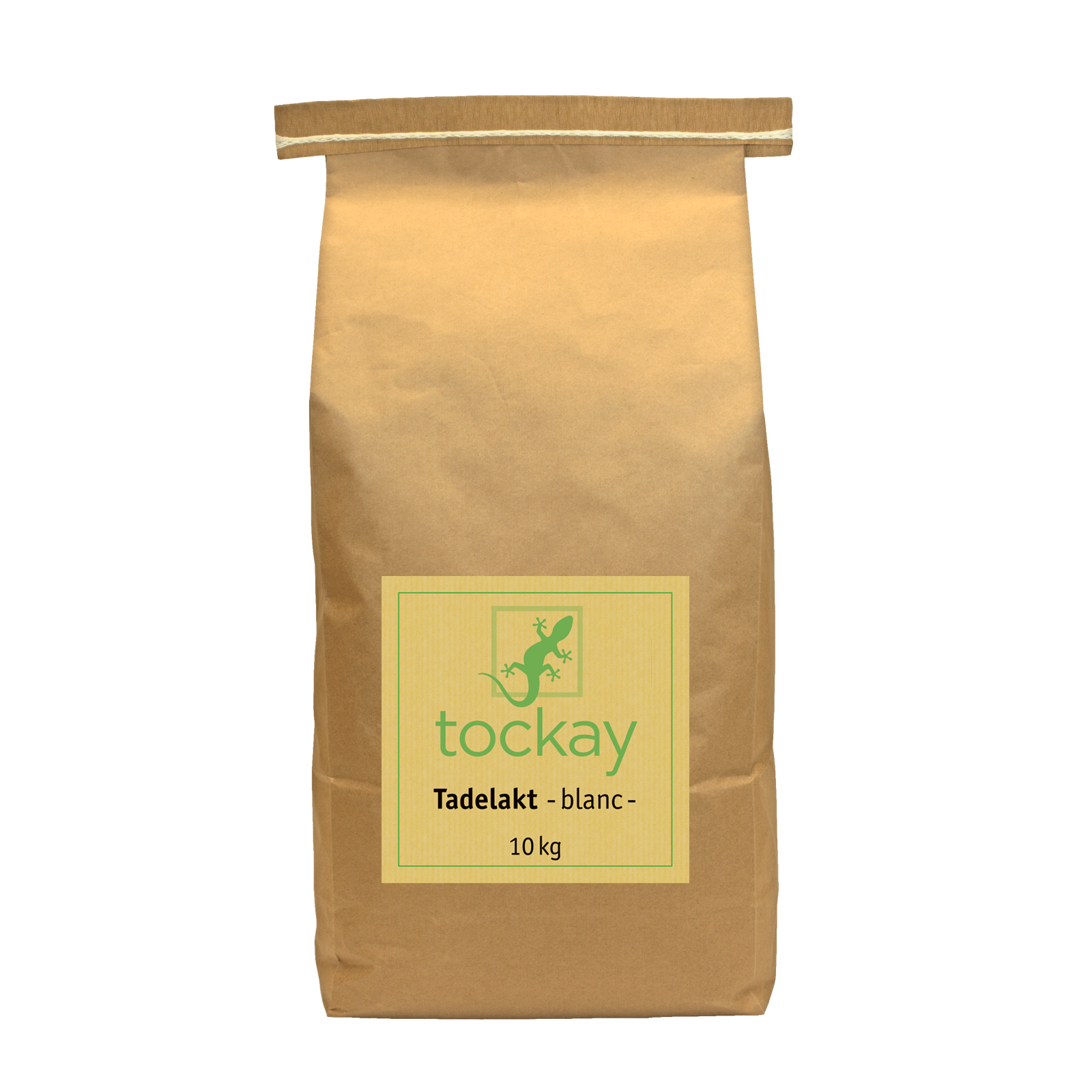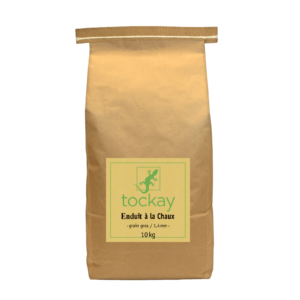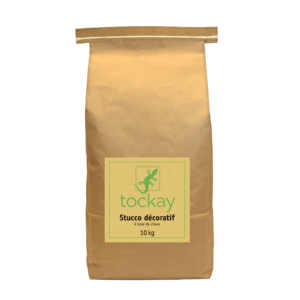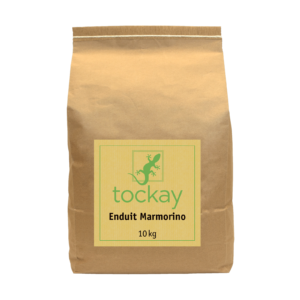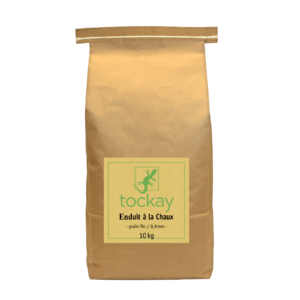Tadelakt
$76.00 – $275.00
Tockay’s Tadelakt is a lime plaster inspired by an ancient Moroccan tradition with qualities identical to those of the lime of Marrakech: shiny and water resistant. Monocoque, it can be used as a substitute for ceramic tiles inside a shower.
| Format | Consumption | CAD $ |
|---|---|---|
| 2.5 kg | Approx. 11 ft² (2 coats) | 76 |
| 10 kg | Approx. 44 ft² (2 coats) | 275 |
Description
Tockay’s Tadelakt is a lime plaster inspired by an ancient Moroccan tradition. Its qualities are identical to those of the lime of Marrakech: brilliant and resistant to water. Tadelakt is not only applied on walls, it can also be applied on sinks, table tops, tiles and terracotta pottery, and of course in hammams. The technique of laying Tadelakt is for the initiated. It is applied with different spatulas to compress it, then a ceramic stone, and finally it is polished with Marseille soap.
Application
Please take note of the TECHNICAL DATA SHEET of the product before using it.
TIPSHEET: Surface Preparation for Plasters
TIPSHEET: Protecting Tadelakt with Encaustic
TIPSHEET: Tadelakt Care Instructions in Wet Areas
PREPARATION OF TADELAKT
Pour the powder into the indicated amount of clean, cold water, stir using a powerful mixer (a drill with a whisk attachment) until a lump-free paste is obtained. Clean the edge of the bucket with a trowel from time to time. Let stand for at least 30 minutes, mix again before use.
This preparation should be used within 8 to 10 hours.
QUANTITY OF WATER TO USE
0,25 litre of water for 1kg of powder. The quantity of water can be increased if necessary.
TINT
Tadelakt can be tinted with a maximum of 10% of Tockay pigments. For example: 10 kg of Tadelakt can be tinted with 1 kg of pigment. The amount of pigment should not exceed 5% for iron oxide and titanium white pigments.
Mix the pigments with a little water until a lump-free paste is obtained. A better result is obtained by dissolving the pigments with demineralized water. Then add the pigments, either in the water of preparation of Tadelakt, before incorporating the powder of Tadelakt, or directly in Tadelakt already prepared. Mix everything well to obtain a uniform color. Clean the edges of the bucket from time to time with a trowel.
RECOMMENDED TOOLS
– Ceramic stone for Tadelakt
– Plastic spatula (3 pieces of different sizes)
– Smoothing trowel (200 x 80 mm)
The ceramic stone, used as a polishing stone, has a hardness of 9.5 (Mohs) and is free of pores.
SUITABLE SURFACES
The most suitable surfaces for Tadelakt, in dry or humid areas, are masonry surfaces covered with a layer of at least 1.5 cm of lime plaster or lime/cement plaster, both untreated and solid. Tadelakt can then be applied directly on this surface.
The following surfaces can be covered with Tadelakt only after having been coated with a casein primer and an intermediate layer of 0.9 mm lime plaster: plasterboard, plaster-cellulose, gypsum plaster, cement fiber boards, concrete.
Surfaces composed of panels must be completely reinforced if necessary: insert a fiberglass mesh in the lime plaster, then cover it.
Surfaces must be dry and rough: Tadelakt should not be applied on smooth surfaces. Apply the coating in such a way as to round the corners and edges, avoid accentuating their angle. Do not use corner molding. Remove binder build-up and sinter from coated surfaces.
Tadelakt is not suitable for constantly wet surfaces.
In dry areas, Tadelakt can also be applied over clay plasters. The strength of a clay plastered surface is paramount and the subsequent application of Tadelakt is at your own risk. We recommend to pre-harden the surface with potassium water glass, dilution: 1 part potassium water glass + 3 parts water. Allow to dry at least 24 hours.
Then apply a coat of casein primer, followed by an intermediate coat of 1.4 mm lime plaster with a fiberglass mesh.
IN WET AREAS
Ensure proper water drainage on shower walls and around bathtubs. Since silicone does not adhere to soaped Tadelakt, separate the Tadelakt surfaces from the floors and tubs with a mosaic or tile strip and then seal the joint with silicone.
In wet areas, the use of a waterproofing primer is recommended. Do not apply Tadelakt over clay plasters in wet areas.
APPLICATION
Tadelakt must be applied in two layers. These two coats, as well as the first treatment with soap, must be done in the same day.
Protect the Tadelakt from drying out too quickly during application, avoid drafts, high temperatures and direct sunlight. Wet dry surfaces before application.
1st coat of Tadelakt:
Trowel the first coat of Tadelakt over the entire surface to a thickness just larger than the grain size (approx. 1-1.5 mm). Allow to harden until the surface becomes impact resistant. The 1st coat of Tadelakt should not be smoothed, polished or densified and should not dry completely before the application of the 2nd coat.
2nd coat of Tadelakt:
Trowel the 2nd coat of Tadelakt over the entire surface to a thickness just larger than the grain size (approx. 1-1.5 mm) and allow to set. Flat surfaces can be trowelled tight. Then polish the surface by moving the ceramic stone in small circles and exerting light pressure until all pores are closed and the gloss is achieved. The correct time for polishing can vary greatly and depends on the absorption of the substrate, its residual moisture, and the environmental conditions.
1st coat of soap:
The first coat of soap should be applied shortly after the polishing of the 2nd coat of Tadelakt. The Tadelakt should not have dried completely, it should remain slightly damp. Dilute the polishing soap: 1 part soap + 6 parts water. Apply with a flexible brush the soap solution in a uniform way and remove the excess. Let it work for a while, then polish with the ceramic stone until you get an even shine.
2nd coat of soap:
When the surface is completely dry (maximum after 2 days), apply the soap solution again. Let it work for a while, then polish the surface with a ball made of plastic sheet (HDPE, like a transparent plastic bag).
ADDITIONAL TREATMENTS
To obtain a higher shine, Tadelakt can be waxed. Use the wax only on soaped surfaces. Never use it on wet areas or areas affected by water splashes (risk of white spots).
Apply a thin layer of Punic Wax with a soft cloth and buff directly with the cloth.
You can increase the shine in the same way with Tockay Carnauba wax emulsion.
CLEANING AND MAINTENANCE
Cleaning: Clean Tadelakt surfaces only with water and a little Marseille or Corfu soap: about 1-2 teaspoons per 8 litres of water. Use a soft sponge.
To avoid lime deposits, dry the shower walls with a soft cloth after each use.
Do not use other household cleaners, scouring sponges or microfiber cloths!
Maintenance: To preserve the functionality of the wet areas, soap should be applied to Tadelakt every 1-2 months. Avoid matte areas which should be treated directly with soap. For all the rest, apply diluted polishing soap (see above “1st layer of soap”). After a short setting time, polish the surface with a ball made of a plastic sheet (HDPE).
It is also possible to use Marseille soap or Corfu soap in the same way: 2-3 teaspoons of soap + 2 litres of water.
The Tadelakt must be completely dry once a day. It is advisable to dry the shower walls with a soft cloth after each use. Discoloration and mildew can occur if the Tadelakt remains wet for too long in the matte areas.
REPAIRS
Scrape or cut off the entire layer of Tadelakt on the damaged area, then repair with the original material. Repairs will be visible; these are the usual “aging marks”.
DRYING TIME
Dry after 2-3 days if the thickness of Tadelakt is 3 mm. Treat the surface gently during the first 3 months. Final hardness is reached after about 6 months.
CLEANING OF TOOLS
Clean with water immediately after use.
Technical Data
Before using this product, consult its Technical Data Sheet.
Safety Data Sheet of the product.
TIPSHEET: Protecting Tadelakt with Encaustic
Please note that the yield of Tadelakt is given for the 2 coats necessary to achieve this finish. The yield may vary depending on the substrate, the application method and the quality of the surface. Determine exact yield by testing.
Colour Chart
Choose one of the 72 shades in our colour chart and rediscover the forgotten gestures of the craftsman by mixing your own colour using Tockay natural dry pigments!
All natural, non-toxic and free of petroleum-based chemicals, our pigments are packaged in powder form and are easily mixed with water and then incorporated into the paint or plaster according to a precise recipe. For GekkkoSOL silicate-based paints, use GekkkoSOL thinner to dilute the pigments.
– Always be sure to remove lumps
– Ultramarine pigments should be used within 12 hours of preparation when mixed with a lime-based product
The online colour guides are provided for information purposes only. Please note that colour tones may not always be displayed correctly by different monitors and their settings. The same applies to prints of these colour charts that you make yourself.
To get the best impression of our colors, we recommend the purchase of handmade colour charts made from casein paint and natural dry pigments.
Please consult:
Get Hold of the Colour Swatches
72 tint colour chart and recipes
How to tint your paint or plaster with dry pigments

